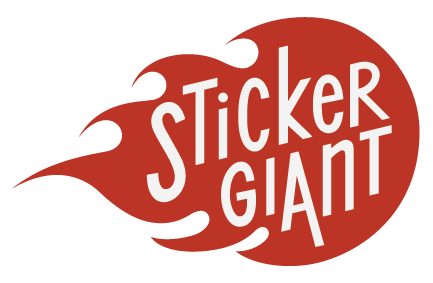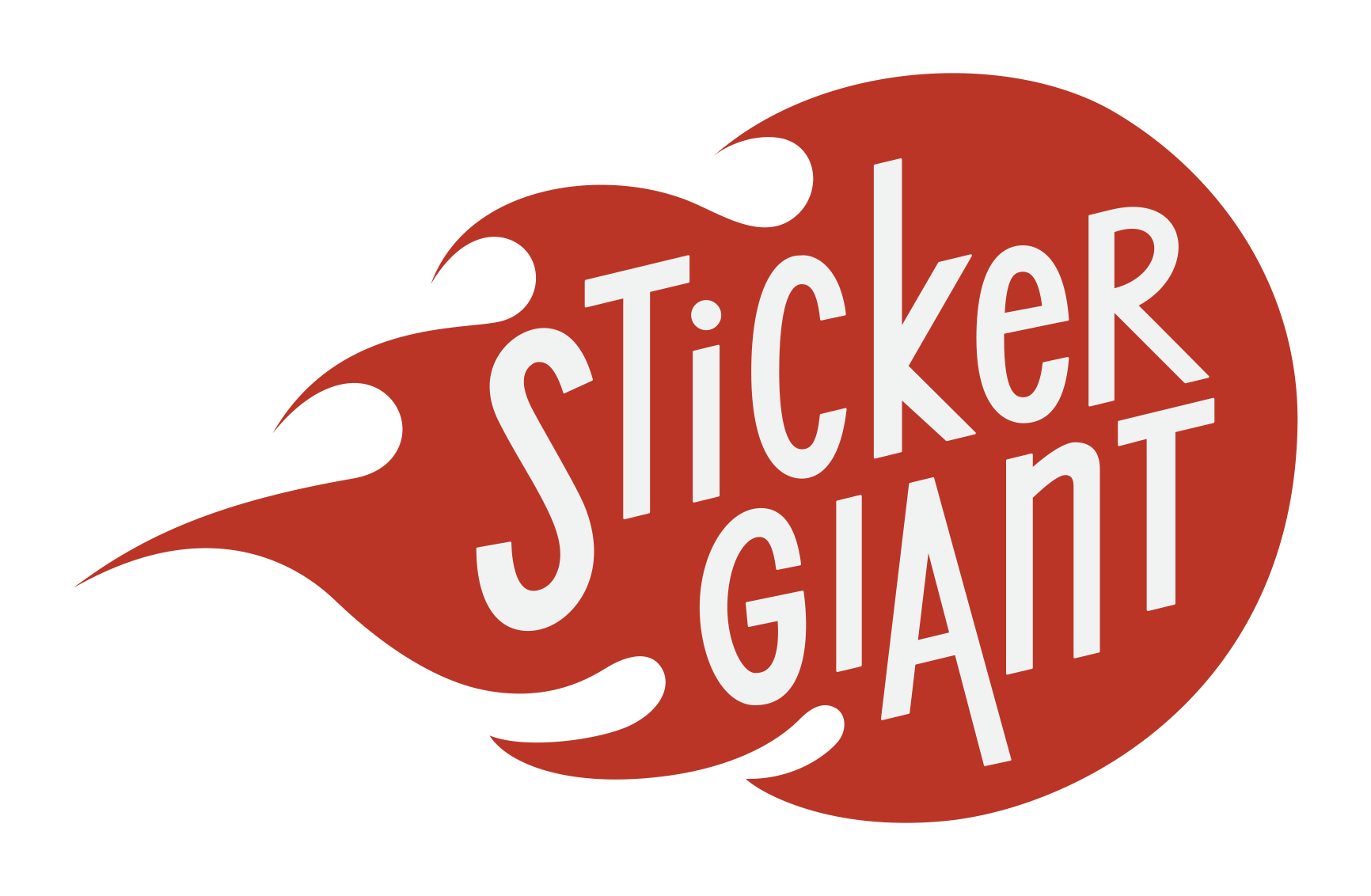December 31, 2009
The Difference between Spot color and 4 Color Process
Colors created without screens or dots are referred to in the industry as spot or solid colors. From a palette of 14 basic colors, each of the spot colors in the pantone matching system is mixed according to its own unique ink mixing formula developed by Pantone.
Here is an example of a Spot color sticker. It has 3 spot colors red, blue, and green. Spot color stickers are the best value but get more pricey as you add more colors. Process colors are represented as percentages of cyan, magenta, yellow, and black. Varying the percentages offers thousands of color possibilities. This method of achieving color in printing is referred to as CMYK, four-color process, 4C process or even just process. To reproduce a color image in 4CP, a file is separated into 4 different colors, Cyan, magenta, yellow, and black. The screened separations are then transferred to four different printing plates, one for each color, and run on a printing press with one color overprinting the next. The final piece will end up looking like the original artwork.
Here is an example of a Process sticker. These are kind of expensive but well worth it. You can have a wide range of colors and gradients and can duplicate more detailed stickers. If u have the money and want a really nice sticker, process is the way to go. Now you know the difference between Spot color and 4 Color Process.
To learn more about our spot color vs full color printed stickers, be sure to visit our Resource page on this topic!

